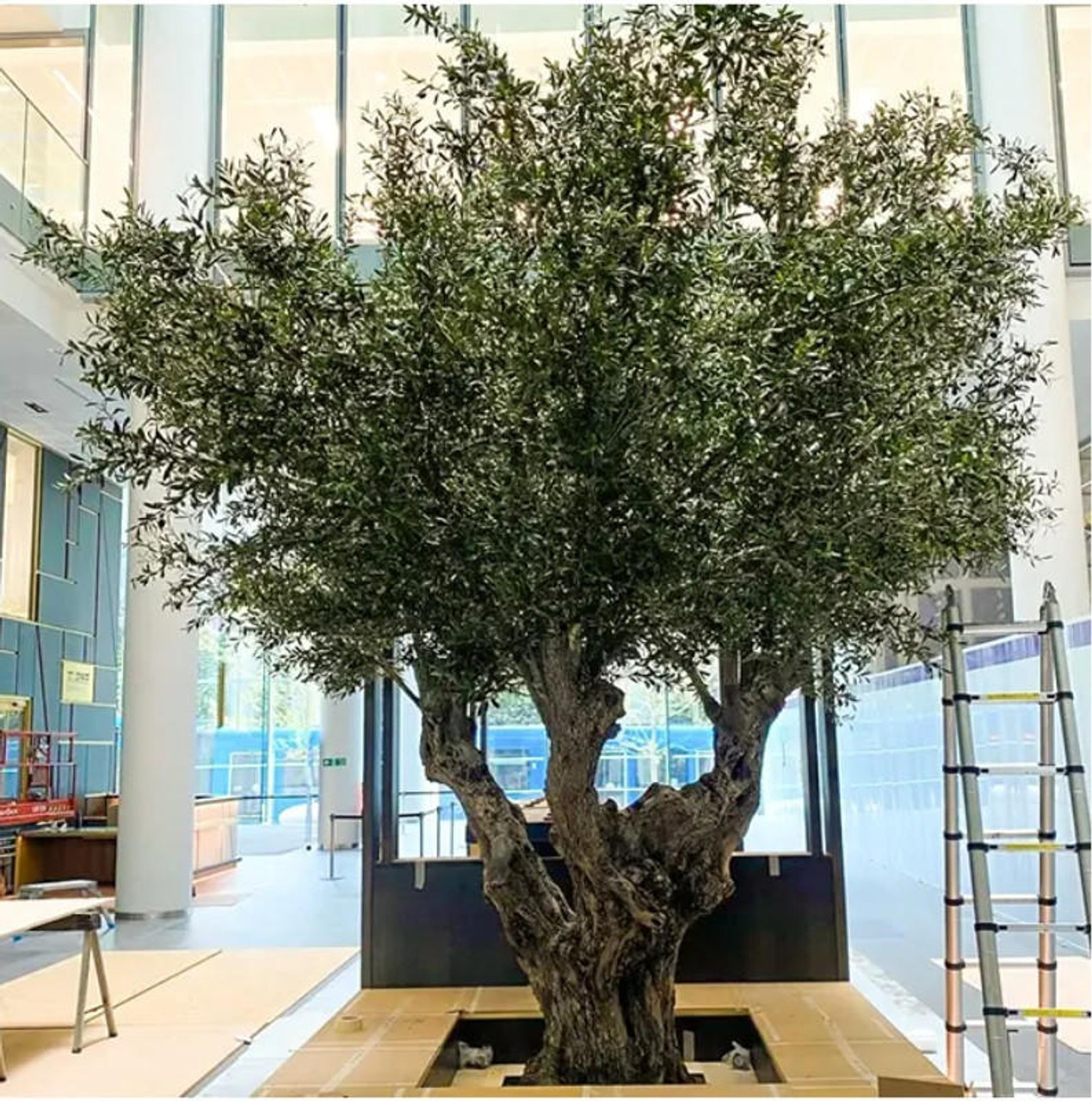How to Grow and Care for Olive Trees at Home
Aug 10, 2024
How to Grow and Care for Olive Trees at Home: A Practical Guide for Home Gardeners
Olive trees (Olea europaea) are iconic symbols of the Mediterranean, revered not just for their beauty but also for their nutritious fruits. Cultivating olive trees at home can be a rewarding experience, offering both aesthetic appeal and a potential harvest of olives for oil or curing. While they are traditionally associated with warm, dry climates, with the right care and conditions, olive trees can thrive in a variety of environments. This guide will provide you with all the essential information needed to grow and care for olive trees at home.
Understanding Olive Trees
Before diving into the specifics of growing olive trees, it’s important to understand the nature of the tree itself. Olive trees are evergreen, with silvery-green leaves and gnarled trunks that give them an ancient, dignified appearance. They are slow-growing and can live for hundreds of years, making them a long-term investment in your garden. The trees are drought-tolerant and can adapt to a range of soil conditions, though they thrive best in well-drained, sandy soils.
Climate Considerations
Olive trees are native to the Mediterranean region, which means they prefer a climate that mimics those conditions: hot, dry summers and mild, wet winters. Ideally, olive trees should be grown in USDA hardiness zones 8 through 11. However, they can tolerate short periods of frost and temperatures as low as 15°F (-9°C), especially when they are mature and well-established.
If you live in a cooler climate, you can still grow olive trees in containers and move them indoors during the winter. In such cases, ensure that they receive plenty of sunlight, ideally from a south-facing window. It’s also important to avoid overwatering, as olive trees are prone to root rot in consistently wet conditions.
Choosing the Right Olive Variety
When selecting an olive tree for your home garden, consider both your climate and the intended use of the olives. Some popular varieties for home gardening include:
- Arbequina: A Spanish variety known for its high oil content and ability to thrive in colder climates. Arbequina olives are small but produce a delicate, fruity oil.
- Mission: Originally from California, Mission olives are versatile and can be used for both oil and table olives. They are hardy and adaptable to a range of climates.
- Koroneiki: A Greek variety prized for its oil, Koroneiki trees are drought-tolerant and produce small olives with a rich, peppery flavor.
- Frantoio: An Italian variety that produces high-quality oil with a fruity, aromatic profile. Frantoio trees are well-suited to warmer climates.
- Manzanilla: Commonly used for table olives, Manzanilla is a Spanish variety that produces medium-sized, flavorful fruits.
Each variety has its own specific needs and characteristics, so choose one that suits your climate and the type of olives you wish to harvest.
Soil Requirements
Olive trees are adaptable to a range of soil types but prefer well-drained, sandy soils with a pH between 6 and 8. They do not thrive in heavy clay soils, which retain water and can lead to root rot. If your garden has poor drainage, consider planting your olive tree in a raised bed or container to improve the conditions.
Before planting, it’s a good idea to test your soil’s pH and drainage. If necessary, amend the soil with sand or gravel to improve drainage, and add lime to raise the pH if it is too acidic. Compost can also be mixed into the soil to provide additional nutrients, though olive trees are not particularly heavy feeders.
Planting Olive Trees
Once you’ve chosen your variety and prepared the soil, it’s time to plant your olive tree. Follow these steps for successful planting:
- Choose the right location: Olive trees need full sun to thrive, so select a spot in your garden that receives at least 6 to 8 hours of direct sunlight each day. Ensure there is enough space for the tree to grow; olive trees can reach up to 20 feet in height and spread.
- Dig the hole: Dig a hole twice as wide as the root ball and just as deep. This will give the roots plenty of room to spread out. If you’re planting in a container, choose a large pot with drainage holes and fill it with a well-draining potting mix.
- Plant the tree: Place the tree in the hole, ensuring that the top of the root ball is level with the surrounding soil. Backfill the hole with soil, gently firming it around the roots. Water the tree thoroughly after planting to settle the soil and eliminate air pockets.
- Mulch and water: Apply a layer of mulch around the base of the tree to help retain moisture and suppress weeds. Keep the mulch a few inches away from the trunk to prevent rot. Water the tree deeply, but allow the soil to dry out between waterings.
Watering and Fertilizing
Olive trees are drought-tolerant once established, but young trees need regular watering to develop strong root systems. Water deeply every 1 to 2 weeks during the first few years, depending on your climate and soil conditions. Once the tree is established, you can reduce the frequency, allowing the soil to dry out between waterings. Be cautious of overwatering, as olive trees are susceptible to root rot.
Fertilizing olive trees is generally not necessary, especially if you’ve amended the soil with compost at planting. However, if you notice slow growth or pale leaves, you can apply a balanced fertilizer in the spring. Avoid high-nitrogen fertilizers, which can encourage excessive foliage growth at the expense of fruit production.
Pruning Olive Trees
Pruning is an essential part of olive tree care, helping to shape the tree, improve air circulation, and encourage fruit production. The best time to prune is in late winter or early spring, before new growth begins. Here’s how to prune your olive tree:
- Remove dead or diseased branches: Start by cutting away any dead, damaged, or diseased branches. This helps prevent the spread of disease and improves the overall health of the tree.
- Thin out the canopy: Olive trees have a natural tendency to form a dense canopy, which can limit air circulation and sunlight penetration. Thin out the canopy by removing some of the smaller, inward-growing branches. This will open up the tree and allow more light to reach the interior branches.
- Shape the tree: Olive trees can be pruned to maintain a specific shape or size. For a more formal appearance, trim the tree into a compact, rounded shape. If you prefer a more natural look, allow the tree to take on its natural form, but remove any branches that are crossing or growing too close together.
- Prune for fruit production: Olive trees produce fruit on the previous year’s growth, so avoid heavy pruning of the new shoots. Focus on removing old, unproductive wood and encourage the growth of new shoots by light pruning.
Pest and Disease Management
Olive trees are relatively resistant to pests and diseases, but they can still be affected by a few common issues:
- Olive fruit fly: The olive fruit fly is one of the most serious pests for olive trees, laying its eggs in the fruit and causing the olives to drop prematurely. To control olive fruit flies, you can use traps or apply an organic insecticide. Another method is to harvest the fruit early before the flies have a chance to lay eggs.
- Scale insects: Scale insects can be found on the leaves and stems of olive trees, where they feed on the sap and cause a decline in the tree’s health. These pests can be controlled by applying horticultural oil or insecticidal soap.
- Root rot: Root rot is a fungal disease that affects olive trees in poorly drained soils. The best way to prevent root rot is to ensure your tree is planted in well-drained soil and to avoid overwatering.
- Peacock spot: This fungal disease causes dark, circular spots on the leaves, leading to defoliation in severe cases. To control peacock spot, remove and destroy affected leaves, and apply a copper-based fungicide during the wet season.
Harvesting Olives
Olives can be harvested for either oil production or for curing as table olives. The timing of the harvest depends on the intended use and the variety of olive tree:
- For oil: Harvest olives for oil production when they turn from green to purple but before they are fully black. The olives should still be firm to the touch. The oil content is highest at this stage, and the flavor will be fruity with a slight bitterness.
- For table olives: If you’re harvesting olives to cure and eat, wait until they are fully ripe and black. These olives will be softer and have a more mellow flavor, suitable for curing in brine or lye.
To harvest, simply handpick the olives or gently shake the branches to dislodge the fruit. Be careful not to bruise the olives, as this can affect the quality of the oil or the curing process.
Container Growing
If you’re limited on space or live in a colder climate, growing olive trees in containers is a great option. Choose a dwarf variety or a tree that is naturally compact, such as the Arbequina or Koroneiki. Plant the tree in a large container with drainage holes, and use a well-draining potting mix. Container-grown olive trees need more frequent watering than those planted in the ground, but be sure to allow the soil to dry out between waterings to prevent root rot.
During the winter, move the container indoors to a sunny spot to protect the tree from frost. You can also wrap the container in bubble wrap or a similar insulating material to protect the roots from freezing temperatures.
Winter Care
In colder climates, protecting your olive tree from frost is crucial to its survival. If your tree is planted in the ground, consider using frost cloths or blankets to cover the tree during cold spells. Mulching around the base of the tree can also help insulate the roots.
For container-grown trees, bring the tree indoors or to a sheltered location before the first frost. Reduce watering during the winter months, as the tree’s growth will slow down, and it will require less moisture.
Patience and Rewards
Growing an olive tree is a long-term commitment, as it can take several years for the tree to produce fruit. However, with patience and proper care, your efforts will be rewarded with a beautiful tree that can live for generations. Whether you’re harvesting your own olives or simply enjoying the tree’s elegant presence in your garden, the olive tree is a symbol of peace, resilience, and enduring beauty.
Conclusion
Cultivating olive trees at home can be a deeply satisfying experience, blending the joys of gardening with the potential for a delicious and healthful harvest. By understanding the specific needs of olive trees—from climate and soil requirements to pruning and pest management—you can successfully grow these ancient trees in your own backyard. Whether you’re a seasoned gardener or a beginner, this practical guide will help you on your journey to becoming an olive tree cultivator. With time, care, and attention, your olive tree will thrive, offering both beauty and bounty for years to come.




